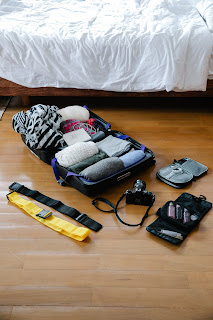Important things about gunshot wounds that everyone needs to know
The amount of gun violence in the US is increasing every year. This growth sounds quite alarming and should make us think about additional protection for ourselves and our families. In addition, knowing how to help a person who has become a victim of gun violence is equally important information. The first thing we should all understand about gunshot wounds is that they are different from other possible injuries. They are much deeper and the bullet often remains inside the wound. Very often, the wound is contaminated with tissue and bone fragments. These gunshot wound specialties predetermine first aid strategies. Abdominal wounds Human internal organs are located in cavities that are protected by bones. Therefore, gunshot wounds are often complicated by broken bones. The internal organs of the abdominal cavity do not have as much protection. Large arteries feed them, so abdominal wounds bleed profusely and can cause hemorrhagic shock. Head injury The carotid arteries supply blood to our head partly through small vessels. This is why facial injuries usually cause profuse bleeding. Bleeding wounds on the face should be swabbed, while wounds on the skull should only be covered with sterile towels. Extremity injury If the limbs are injured, attention should first be paid to whether there has been heavy bleeding. If so, death can come within seconds, so your actions must be quick. By the color of the blood, we can determine which vessel is damaged. Venous blood is dark, and arterial blood is bright red and splashes intensely. This will help you stop the bleeding properly. Stopping the bleeding You stop the blood with a compression bandage (or something that can act as a tight bandage) or tampons (used for muscle wounds). If the vein is bleeding, you need to tie it a little below the wound, if it is an artery - tie it above. The limb must not be tied for more than two hours; which is enough time to take the injured person to the emergency room. To tampon the wound, tightly pack it with a sterile bandage using a stick. If you see signs of a broken bone, it is necessary to immobilize the limb. Try not to move it to prevent the sharp broken ends from traumatizing tissues and blood vessels. Cover the wound with a sterile dressing. If a back injury occurs, a person may pass out. Lay the person down and check for breathing and heart rate; use mouth-to-mouth breathing or chest compressions if necessary. Chest wounds If you see a chest injury, it is important to prevent air and blood from entering the pleural cavity and causing respiratory collapse. The injured person must remain semi-sitting and with an airtight bandage (you can soak the bandage in the ointment, use cellophane, or just squeeze it firmly with your hand if you don't have anything to hermetically seal). If you see that the injured person is rapidly deteriorating, fainting and his face turns gray, this may be a sign of a heart injury. In this case, call a doctor immediately, because you cannot cope with it yourself - this is a complicated wound that requires immediate medical attention. The main things to remember - stop the bleeding, immobilize the broken parts and call a doctor or get to the emergency room as soon as possible. Take care of yourself and your loved ones and be aware of how to help others.

Comments
Post a Comment